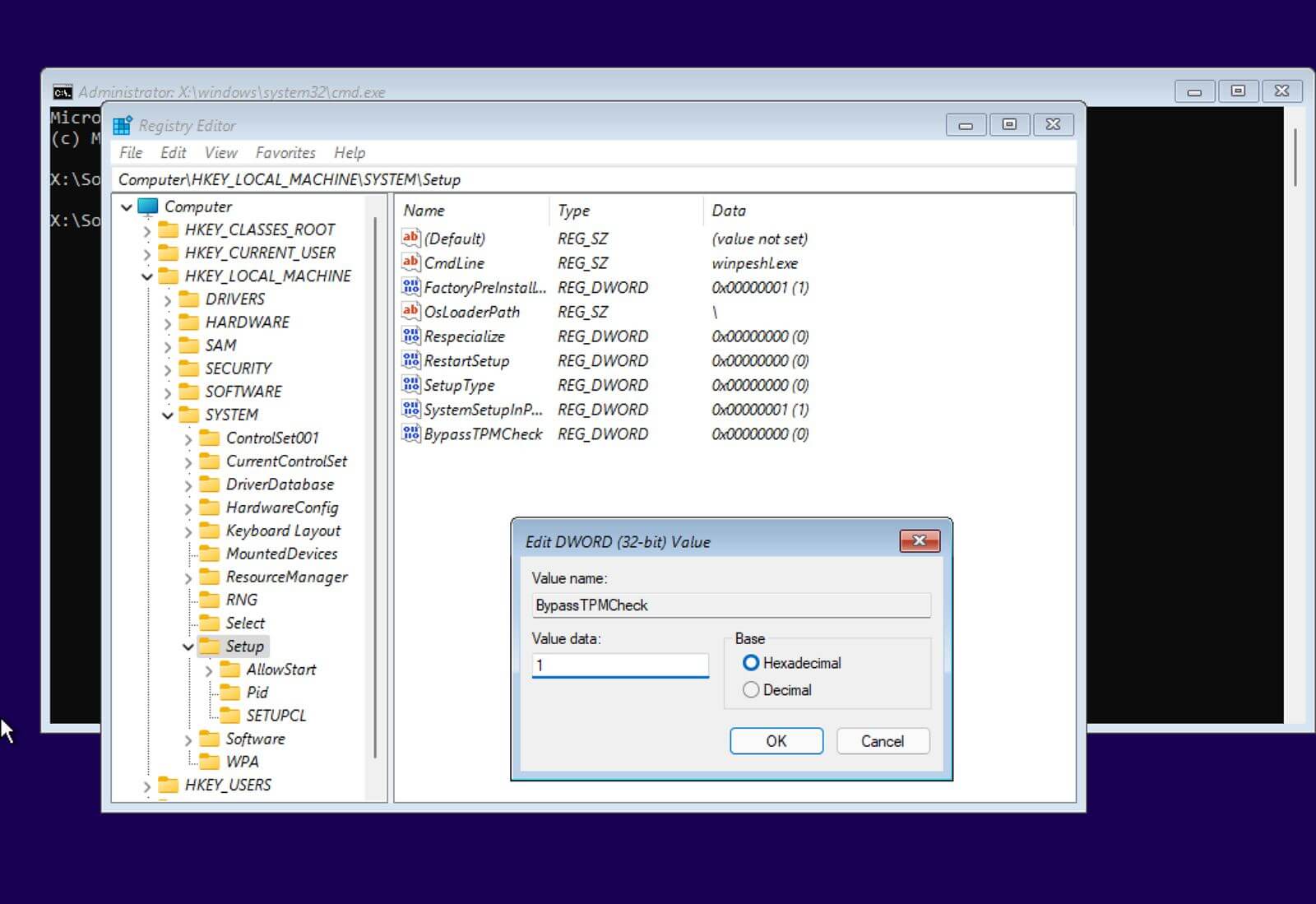Here’s how to install Windows 11 on unsupported hardware without the trusted platform module (TPM) version 2.0 and avoid the “This PC can’t run Windows 11” issue. Even while Windows 11 looks like a fantastic release, compatibility with older hardware isn’t as excellent because Microsoft is imposing some arbitrary limitations that prevent many PCs from being upgraded.
Among these limitations is the requirement for TPM 2.0 hardware, which needs to be turned on before you can install Windows 11. Since a TPM performs cryptographic tasks including creating and storing encryption keys to enable features like Windows Hello, BitLocker, and others, the business aims to make the operating system more secure. Additionally, Secure Boot might need to be activated in Windows 11. Additionally, the processor on your computer must be one of the approved models from Qualcomm, AMD, or Intel. The OS won’t install otherwise.
Even though Windows 11 has a lot of unwelcome compatibility changes and you meet the hardware requirements, the TPM 2.0 chip is the issue. However, someone on Twitter (@cadenzza_) has discovered a way to get around the TPM 2.0 and Secure Boot requirements from within the Windows 11 setup without having to make a custom ISO image.
This post will teach you how to install Windows 11 on incompatible hardware while avoiding the TPM and Secure Boot requirements.Go over the warning.
Bypass Windows 11 TPM and Secure Boot requirements
Use these procedures to get around the TPM 2.0 and Secure Boot requirements when installing Windows 11:
Use the Windows 11 USB flash disk to boot up the computer.
In the setup screen, use the keyboard shortcut Shift key + F10.
To open the Registry Editor from the Command Prompt, type the following command and hit Enter:
Navigate to the Registry path listed below:
Select the Newsubmenu by right-clicking the Setup folder (key), then pick the DWORD (32-bit) Value option.
Regedit for Windows 11 Setup
To address the Windows 11 TPM 2.0 requirement, type the key “BypassTPMCheck” and hit Enter.
Rotate the BypassTPMCheckkey from 0 to 1 by double-clicking on it.
TPM 2.0 is fixed in Windows 11.
Press the “OK” button.
Select the Newsubmenu by right-clicking the Setup folder (key), then pick the DWORD (32-bit) Value option.
To address the Windows 11 Secure Boot requirement, type the keyBypassSecureBootCheck and hit Enter.
Change the value of the BypassSecureBootCheckkey from 0 to 1 by double-clicking it.
Press the “OK” button.
To close the Registry, click theClose(X) button.
To end the Command Prompt, click theClose(X) button.
The OS should install properly after you finish the procedures, which will allow you to proceed with the Windows 11 installation on a device without TPM 2.0 or Secure Boot.
It’s crucial to note that Microsoft’s Windows Insider Program allows you to install Windows 11 previews without any hardware constraints. Rather, when you have to install the final version, the policies will be implemented.



